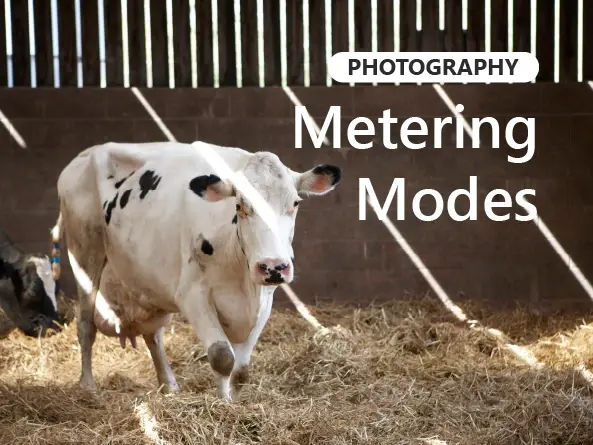What Is Depth of Field and How to Control It in Your Photos
- Jun 4
- 4 min read
Depth of field plays a huge role in how your photos look and feel. Whether you're aiming for soft, blurry backgrounds or sharp detail from front to back, understanding how depth of field works can transform your photography. In this article, you'll learn what depth of field really means, how to control it, and when to use shallow or deep focus for the best results.

What Is Depth of Field in Photography?
Depth of field (DoF) refers to the range in a photo that appears acceptably sharp. It’s the distance between the closest and farthest elements in a scene that are in focus. Understanding this concept is essential for any photographer who wants to take control of their composition and influence how viewers engage with both the subject and the background.
Depth of Field (DoF) is the distance between the nearest and farthest elements in a scene that are in focus.
Mastering depth of field photography helps you shape visual narratives. Whether you’re going for a dreamy portrait or a detailed landscape, DoF lets you guide attention and create mood through focus.
Why Depth of Field Matters
Knowing how to control DoF can dramatically change how your photos feel and what they communicate. A shallow depth adds intimacy, emotion, and minimalism. A deep depth gives context, storytelling, and structure.
Shallow Depth of Field vs. Deep Depth of Field
Shallow Depth of Field

Shallow depth of field is all about selective focus. It isolates the subject by blurring the background—and sometimes the foreground—creating a soft, artistic effect often called bokeh. This style is great for portraits, close-ups, or any image where you want the subject to stand out.
To achieve a shallow depth of field:
Use a wide aperture (like f/1.8 or f/2.8)
Get closer to your subject
Choose longer focal lengths (like 85mm or more)
Deep Depth of Field
A deep depth of field keeps everything in the frame sharp, from front to back. This is perfect for depth of field photography in landscapes, architecture, street scenes, or group shots where clarity across the entire image matters.
To get this look:
Use a narrow aperture (like f/11 or f/16)
Choose wider lenses
Focus strategically, often about one-third into the scene
4 Key Factors That Control Depth of Field
Depth of field doesn’t happen by chance—it’s controlled by a few specific variables:
Variable | Effect on Depth of Field |
Aperture | A wide aperture (low f-number) creates a shallower DoF, while a narrow one (high f-number) increases it. |
Focal length | Longer lenses (e.g., 200mm) produce a shallower DoF by compressing the background more than shorter lenses (e.g., 35mm). |
Distance to subject | The closer the camera is to the subject, the shallower the depth of field becomes. |
Sensor size | Larger sensors (like full-frame) create a shallower DoF compared to smaller sensors when using the same settings. |
Using a Depth of Field Calculator Like a Pro
While experience helps, a depth of field calculator takes the guesswork out. You simply input your settings—focal length, aperture, and subject distance—and it shows exactly how much of your scene will be in focus.
These tools are great for precise planning, especially in tricky lighting or when shooting detailed scenes like nature or architecture. Even if you’re not using one on every shoot, knowing how they work helps you make smarter choices.
For an online depth of field calculator, you can visit PhotoPills
Creative Tips for Depth of Field Photography
Once you understand the basics, you can use depth of field photography to boost creativity and impact.
For Shallow DoF:
Choose a wide aperture
Move closer to your subject
Use a lens with a longer focal length
Focus on single elements or small details for a clean, powerful composition
For Deep DoF:
Use a narrow aperture
Go wide with your lens
Focus about one-third into the frame for maximum sharpness
Pro Techniques:
Try hyperfocal focusing to keep everything from a set point to infinity in focus
Use manual focus and live view to fine-tune when working with a narrow DoF
Whether you’re capturing dreamy portraits or wide, detailed scenes, using depth of field creatively gives your images a compelling edge.
FAQs
What is depth of field in photography?
Depth of field is the range in a photo that appears sharp—from the nearest to the farthest objects in focus.
How does aperture affect depth of field?
A wide aperture (like f/1.8) creates a shallow depth of field. A narrow aperture (like f/16) gives you a deeper depth of field.
What’s the difference between shallow and deep depth of field?
Shallow DoF isolates a subject by blurring the background. Deep DoF keeps the entire scene in focus.
How can I achieve shallow depth of field without expensive gear?
Use your lens’s widest aperture, get closer to your subject, and zoom in to compress the background.
When should I use deep depth of field?
Use it for landscapes, cityscapes, or any scene where you want everything sharp and clear.
Do I need a depth of field calculator?
Not a must, but definitely helpful when accuracy and pre-planning matter—especially in professional or technical shoots.
Depth of field definition? It’s more than just a technical term—it’s a creative tool. Whether you’re going for a clean subject focus or capturing every detail in a vast scene, knowing how to control DoF lets you shape your photos with purpose.
By understanding how aperture, focal length, distance, and sensor size work together—and by experimenting with tools like a depth of field calculator—you’ll gain confidence and consistency. Practice regularly, and before long, managing depth of field will feel second nature.








































